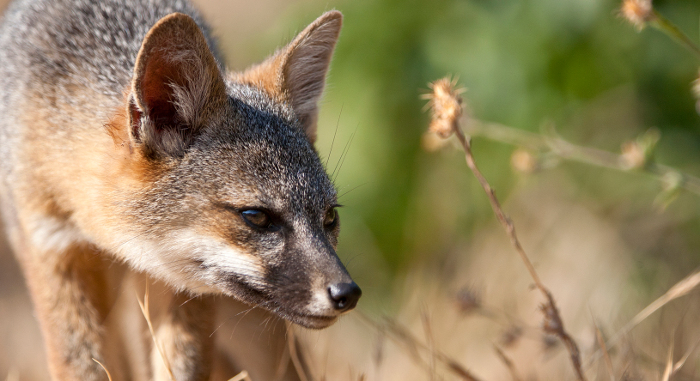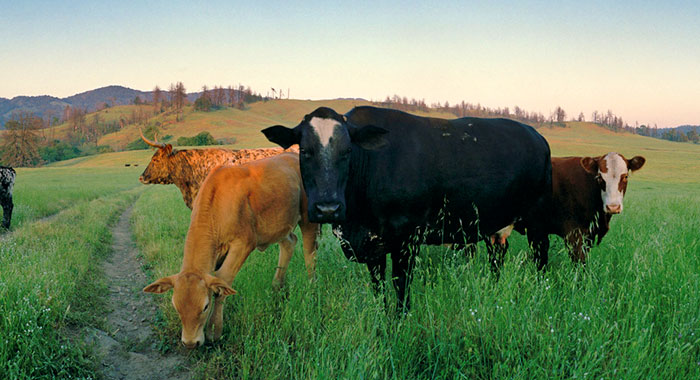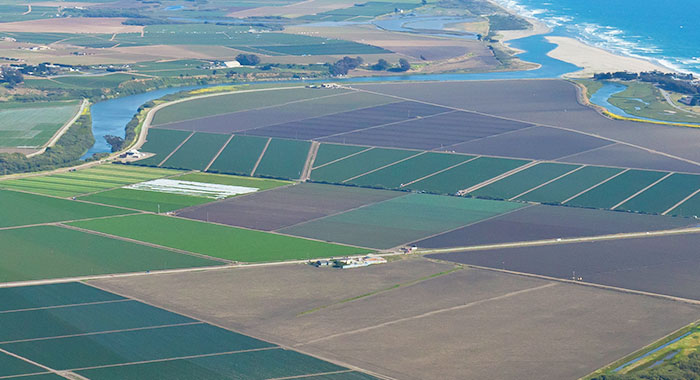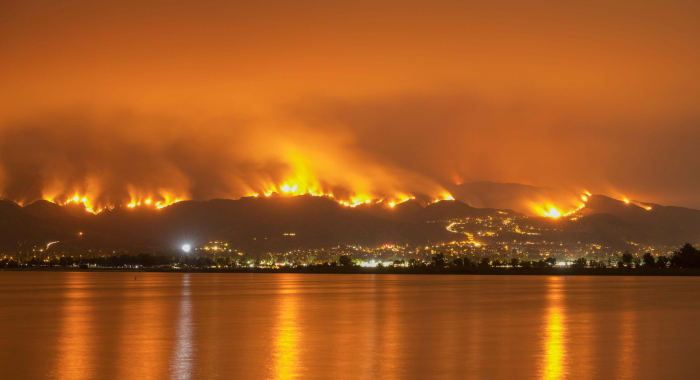In California, a day’s drive can take a visitor from record-setting desert heat to glaciated peaks to temperate rainforests with the world’s tallest trees. This astounding climatic and landscape diversity has helped create a biodiversity hotspot. California is also an economic hotspot – the 6th largest economy in the world – and is home to nearly 40 million people. The demand for land for new development and farms, along with accelerating climate change, puts tremendous stress on ecosystems, and the benefits they provide.
The state’s legacy of conservation has created a network of natural and working lands that benefit people by supplying clean water, capturing carbon, and directly contributing to the state’s economic and cultural vitality through recreation, tourism, and agricultural production. Conservancy scientists work across the spectrum of ecosystem types and human land uses, to advance conservation goals that also contribute to the well-being of people in those places.






C. L. Boser, C. Hanna, D. A. Holway, K. R. Faulkner, I. Naughton, K. Merrill, J. M. Randall, C. Cory, D.H. Choe , S. A. Morrison
Argentine ants are highly invasive and ecologically damaging. This paper presents a method demonstrated to reduce even large-scale (~400 ha) infestations to non-detectable levels. This protocol…Jongmin Yoon , Helen R. Sofaer, T. Scott Sillett , Scott A. Morrison, Cameron K. Ghalambor
Climate is an important factor in how birds apportion time tending their nests, e.g., how much time they spend brooding versus foraging. This study examines how the roles of males and females of one…Taylor J. Noble , Christopher J. Lortie , Michael Westphal, H.Scott Butterfield
This paper presents camera trap data comprising over 425,000 images from the Carrizo Plain National Monument. This unique collection of digital images allowed the authors to capture animal behaviours…Patrick Baur, Laura Driscoll, Sasha Gennet, Daniel Karp
Since a deadly outbreak of pathogenic E. coli in California spinach in 2006, produce growers have been pressured to implement on-farm practices, such as native vegetation removal, in the name of food…David C. Marvin, Lian Pin Koh, Antony J. Lynam, Serge Wich, Andrew B. Davies, Ramesh Krishnamurthy, Emma Stokes, Ruth Starkey, Gregory P. Asner
Integration of multiple technologies greatly increases the spatial and temporal scales over which ecological patterns and processes can be studied, and threats to protected ecosystems can be…David C. Marvin, Gregory P. Asner
Policies that incentivize forest conservation by monetizing forest carbon ultimately depend on the accuracy of carbon stock estimates. Often, these estimates are based on field inventory sampling. In…Christopher J. McColl, Katie Andrews, Mark Reynolds, Gregory H. Golet
In response to the decline of wetland habitats for migrating and wintering water birds in California, the Conservancy developed a program called BirdReturns that creates “pop-up”…Daniel S. Karp, Rebekah Moses, Sasha Gennet, Matthew S. Jones, Shimat Joseph, Leithen K. M'Gonigle, Lauren C. Ponisio, William E. Snyder, Claire Kremen
Food safety concerns have led to pressure on farmers to simplify their farms and landscapes, rather than diversify them. This study demonstrates that two practices – elimination of…Sara M. Kross, T. Rodd Kelsey, Chris J. McColl, Jason M. Townsend
Globally, loss of biodiversity and impacts to natural services and human health have been driven to a significant degree by loss of natural habitats due to agricultural land conversion and management…A Network for Voluntary Conservation
The Pajaro Compass—with its interactive maps and tools—supports a group of over 50 stakeholders representing conservation, agriculture, transportation, government and community…Tamara S Wilson, Benjamin M Sleeter, D Richard Cameron
This publication discusses how land use changes in Mediterranean California will drive changes in water use between urban uses and annual vs. perennial crops. The authors used a state-and-transition…Michael F. Westphal, Joseph A. E. Stewart, Erin N. Tennant, H. Scott Butterfield, Barry Sinervo
This paper documents the negative effects of the 2012-2014 drought—the most severe multi-year drought in southwestern North America in the past 1,200 years—on the endangered blunt-nosed…Funk, W.C., R.E. Lovich, P.A. Hohenlohe, C.A. Hofman, S.A. Morrison, T.S. Sillett, C.K. Ghalambor, J.E. Maldonado, T.C. Rick, M.D. Day, T.J. Coonan, K.R. Crooks, A. Dillon, D.K. Garcelon, J.L. King, L.M. Lyren, E.E. Boydston, N. Gould , W.F. Andelt
The genomics revolution provides powerful tools for understanding evolution and advancing conservation. This study applies genomics techniques to examine the evolutionary mechanisms underpinning…M.B. Pesendorfer, T.S. Sillett, S.A. Morrison, A.C. Kamil
Foraging behavior may be influenced by a variety of factors, including food abundance and competitor density. This study examines how such factors affect the seed caching behavior of the Island…